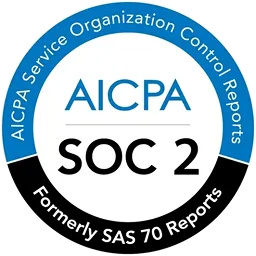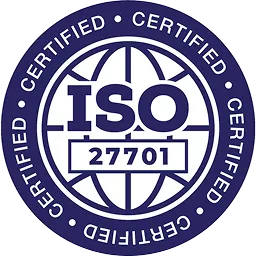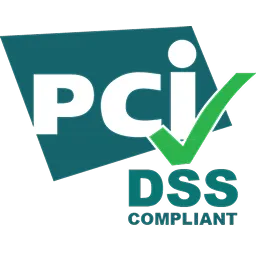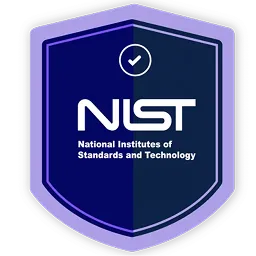This article aims to guide you through the process of creating an effective risk management methodology tailored to the specific challenges and needs of your IT environment.
From cybersecurity threats to operational disruptions, the consequences of inadequate risk management can be severe. Without a structured methodology in place, you may find yourself reactive rather than proactive, addressing risks only after they've materialized. This reactive approach not only increases the likelihood of costly incidents but also strains resources and undermines your ability to innovate and grow securely.
The fallout could include financial losses, legal liabilities, damage to your company's reputation, and erosion of customer trust. Moreover, operational disruptions due to unforeseen events can lead to downtime, affecting productivity and revenue streams.
However, a proactive approach to risk management can mitigate these challenges and strengthen your organization's resilience. By creating a tailored risk management methodology, you can systematically identify, assess, prioritize, and mitigate risks specific to your IT operations. This methodology will enable you to establish clear policies, procedures, and controls that enhance your ability to detect vulnerabilities, respond swiftly to incidents, and recover effectively when disruptions occur.
In this guide, we will cover various risk management methodologies, factors to consider during the selection process, and popular frameworks. This will help you effectively align your risk management efforts with your organization's unique needs and objectives.
What Are The Various Types Of Risks In The IT Domain?
As businesses increasingly rely on technology to run their operations, the IT landscape has become entangled with numerous threats. These risks include various circumstances, each providing distinct problems and necessitating customized risk management techniques.
Let's look at IT firms' various types of risks and why addressing them efficiently is vital.
- Cybersecurity Risks: These threats significantly threaten data integrity, confidentiality, and accessibility. They include malicious cyberattacks, hacking attempts, ransomware assaults, and insider breaches.
- Operational Risks: These risks stem from day-to-day IT operations and encompass system malfunctions, network downtimes, unmanaged SaaS risks, software glitches, human errors, and disruptions in the supply chain.
- Compliance Risks: Organizations must adhere to many data protection, privacy, and security regulations. Non-compliance can result in severe legal consequences and financial penalties.
- Strategic Risks: These risks are associated with IT strategy and planning and cover aspects such as technology adoption, digital transformation initiatives, vendor management, and outsourcing decisions.
- Reputational Risks: IT incidents and breaches can tarnish an organization's reputation, eroding trust among its customers, partners, and stakeholders.
- Financial Risks: IT projects and investments carry financial risks, including budget overruns, cost escalations, and complexities in achieving a return on investment.
Effective risk management in IT hinges on collaborative efforts across various departments, including IT, cybersecurity, legal, compliance, finance, and senior management. Staying abreast of emerging threats, industry standards, and regulatory changes is crucial for effectively adapting and fine-tuning risk management strategies.
6 Risk Management Methodologies Available Today
Risk assessments are pivotal for businesses to navigate the complexities of information security effectively. Several well-defined risk management frameworks have emerged, each offering a structured approach. Let's delve into some of the most renowned risk management methodologies:
1: NIST RMF
NIST RMF (National Institute of Standards & Technology Risk Management Framework) presents a 7-step process to integrate information security and risk management into the system development lifecycle:
- Step 1: Prepare to manage security and privacy risks.
- Step 2: Categorize information based on impact.
- Step 3: Select NIST SP 800-53 controls for system safeguarding.
- Step 4: Implement and document controls.
- Step 5: Assess control performance.
- Step 6: Senior leadership evaluates risk for system authorization.
- Step 7: Continuously monitor controls and risks.
2: COSO ERM
COSO ERM (Committee of Sponsoring Organizations of the Treadway Commission Enterprise Risk Management Framework) aids organizations in managing risks aligned with strategy and performance, focusing on everyday operational risk management. It offers comprehensive principles for managing enterprise risks and guides organizations in pursuing growth opportunities while enhancing value.
3: COBIT Framework
ISACA developed the COBIT (Control Objectives for Information and Related Technologies) Framework, which addresses end-to-end IT risk management, encompassing governance, management, processes, people, and technology. It ensures secure and compliant IT operations, enhancing security posture and risk management efficiency.
4: ISO 27005:2018
ISO (International Organization for Standardization) 27005:2018 supports ISO/IEC 27001 by providing comprehensive guidelines for managing information security risks. It assists organizations in identifying, analyzing, evaluating, treating, and monitoring specific information security risks. By adhering to this standard, organizations can enhance their overall information security posture and ensure a systematic approach to risk management in the context of ISO/IEC 27001 compliance.
5: OCTAVE
OCTAVE (Operationally Critical Threat, Asset, & Vulnerability Evaluation) offers a comprehensive method for identifying, evaluating, and managing information security risks. It does this through three phases: building asset-based threat profiles, identifying infrastructure vulnerabilities, and developing a security strategy.
By understanding an organization's critical assets, OCTAVE helps identify potential threats and their potential impact on these assets. It also assists in pinpointing weaknesses in the organization's infrastructure that could be exploited by threats, allowing for proactive mitigation measures.
6: NIST SP 800-30 Revision 1
NIST SP 800-30 Revision 1 refers to a specific publication from the National Institute of Standards and Technology (NIST), which is part of the U.S. Department of Commerce. This publication is titled \"Guide for Conducting Risk Assessments\" and provides detailed guidance on conducting risk assessments within organizations.
The purpose of NIST SP 800-30 Revision 1 is to assist organizations in identifying, assessing, and managing risks effectively. It outlines a structured approach to risk assessment, including methodologies for analyzing threat sources, vulnerabilities, potential impacts, and the likelihood of threat occurrences. The guidance provided in this publication helps organizations make informed decisions about risk treatment and mitigation strategies.
Choosing the right risk management methodology requires active involvement from company management to determine security criteria and acceptable risk levels. Establishing a company-wide risk management approach ensures a cohesive process across departments, enhancing overall risk management effectiveness.
Ways To Develop The Right Risk Management Methodology For Your Business?
Follow these steps to identify the optimal methodology for your business and develop a customized approach, taking into account the range of available methodologies.
1: Define Clear Organizational Goals & Objectives for Alignment
- Clearly outline what your business aims to achieve in terms of growth, profitability, market share, customer satisfaction, and other strategic objectives.
- Align risk assessment efforts with these goals to prioritize identified risks based on their potential impact on achieving these objectives.
- Communicate these goals across the organization to foster a shared understanding of risk management priorities.
2: Understand Industry and Regulatory Requirements for Compliance
- Conduct a thorough analysis of industry-specific risks, trends, and challenges that could affect your business. This includes market volatility, competitive pressures, technological advancements, and regulatory changes.
- Stay updated with relevant laws, regulations, and compliance standards applicable to your industry. Compliance failures can lead to legal repercussions and reputational damage.
3: Assess the Availability and Suitability of Data & Resources
- Evaluate the quality and accessibility of data needed for risk assessment, such as financial reports, operational metrics, market research, and historical performance data.
- Ensure that your organization has the necessary resources, including skilled personnel, technology tools, and budget allocations, to support effective risk management activities.
4: Establish a Dedicated Risk Management Team for Expertise
- Form a multidisciplinary risk management team with representatives from various departments, including finance, operations, legal, compliance, and IT.
- Assign clear roles and responsibilities within the team to ensure accountability and collaboration in identifying, assessing, and mitigating risks.
- Provide ongoing training and professional development opportunities to enhance the team's risk analysis and decision-making expertise.
5: Conduct Comprehensive Risk Identification for Awareness
- Utilize various methods and techniques to identify potential risks that could impact your business objectives. This may include risk workshops, brainstorming sessions, SWOT analysis, surveys, and data analytics.
- Categorize risks based on their nature (e.g., strategic, operational, financial, compliance), potential impact (low, medium, high), and likelihood of occurrence.
- Engage organizational stakeholders to gather diverse perspectives and insights into emerging risks and opportunities.
6: Analyze & Prioritize Risks to Focus Efforts Effectively
- Evaluate the potential impact of identified risks on your business objectives, financial performance, reputation, customer relationships, and operational continuity.
- Assess the likelihood of each risk materializing based on historical data, industry benchmarks, expert judgment, and external factors.
- Prioritize risks using risk scoring or ranking methodologies, considering their severity, frequency, detectability, and mitigability.
7: Use Tools To Help Streamline & Enhance Processes
- Select appropriate risk management tools and technologies that facilitate data collection, analysis, reporting, and decision-making.
- Zluri is an automated platform designed to streamline the management of SaaS tools and mitigate various associated risks. It's a versatile tool that focuses on the intricacies of hidden Shadow IT risks, vendor risks, and access-related vulnerabilities.
It provides useful information about security concerns linked with various apps. Zluri offers a clear threat level indicator, which aids in the identification of possible risks. This is a real-time evaluation of the risk attached to key applications, not just a figure.

Its main feature is the ability to generate timely notifications for risky apps that may jeopardize critical data. Zluri facilitates rapid response to vulnerabilities by instantly notifying necessary persons.
For example, if Zluri detects vulnerabilities in financial SaaS software, it notifies stakeholders and requests prompt action to protect the data. Its robust monitoring and detection mechanisms effectively identify and manage these risks, enabling proactive measures.

Further, Zluri offers insights into vendor performance, security, and compliance while implementing strict access controls to protect sensitive data. Overall, it enhances security, compliance, and efficiency in managing SaaS tools for modern businesses.
By following these steps and leveraging the right tools and expertise, your business can develop a robust risk assessment methodology that effectively identifies, analyzes, and mitigates potential risks, enabling informed decision-making and strategic resilience.
Continuous Vigilance: The Key to Success In IT Security
Effective risk management requires ongoing vigilance. It is critical to carefully select the appropriate risk assessment approach to successfully navigate potential threats and cultivate a stable and thriving business environment.
Companies can build a strong risk management framework tailored to their specific needs and goals. This involves thoroughly understanding various methodologies, considering organizational objectives, industry standards, and available resources, and utilizing established risk assessment frameworks.
However, falling into complacency is a danger to be aware of. Regularly reviewing and improving risk evaluations enables you to handle emerging risks, assess the effectiveness of present safeguards, and adapt risk management techniques as needed.
Organizations strengthen their security posture by maintaining a vigilant and innovative attitude to risk management activities and set the stage for enduring prosperity.
Frequently Asked Questions (FAQs)
1: What are the core principles of risk management?
Professor Hazel Kemshall developed the 4 Pillars of Risk Management, encompassing Supervision, Monitoring and control, Interventions and Treatment, and Victim Safety Planning. This structured approach ensures a comprehensive strategy for effectively identifying, assessing, and mitigating organizational risks.
2: What is the ABCD model in risk management?
The ABCD model is a systematic approach that Assesses the situation, Balances risks and benefits, Communicates effectively with stakeholders, and Debriefs after taking action. This model provides a clear framework for managing risks proactively and making informed decisions.
3: How does risk assessment differ from risk management?
Risk assessment involves identifying potential hazards, analyzing their likelihood and impact, and evaluating existing control measures. Risk management involves identifying, assessing, prioritizing, and mitigating risks while aligning strategies with organizational goals and objectives.
4: What methodologies are used in risk assessment?
Risk assessment methodologies include qualitative methods like risk matrices and risk registers, quantitative techniques such as Monte Carlo simulations and decision trees, and hybrid approaches combining qualitative and quantitative analyses. These methodologies help organizations comprehensively understand risks and develop effective risk mitigation strategies.






.png)
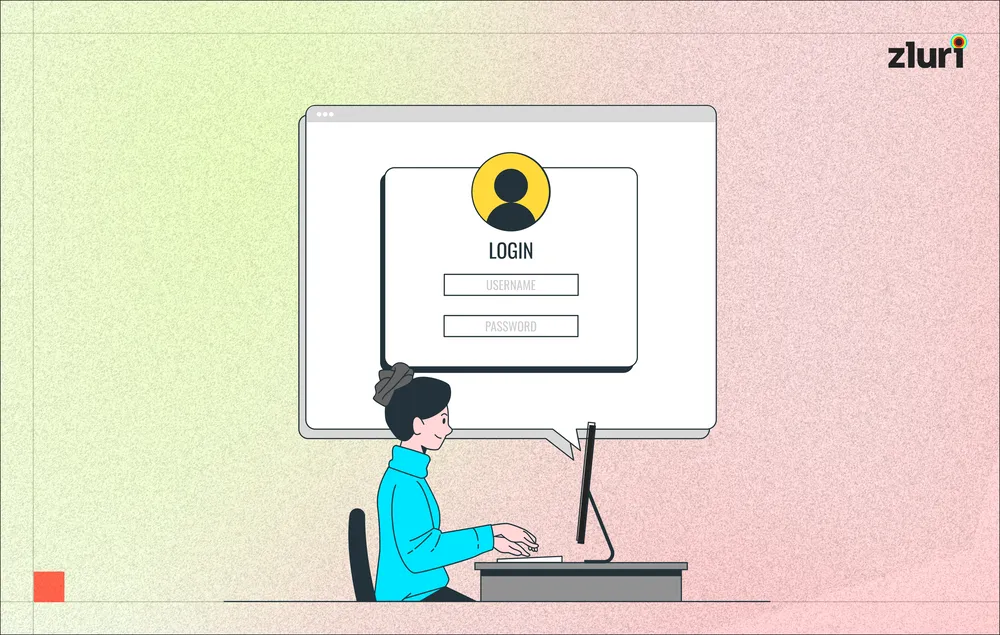

.svg)



